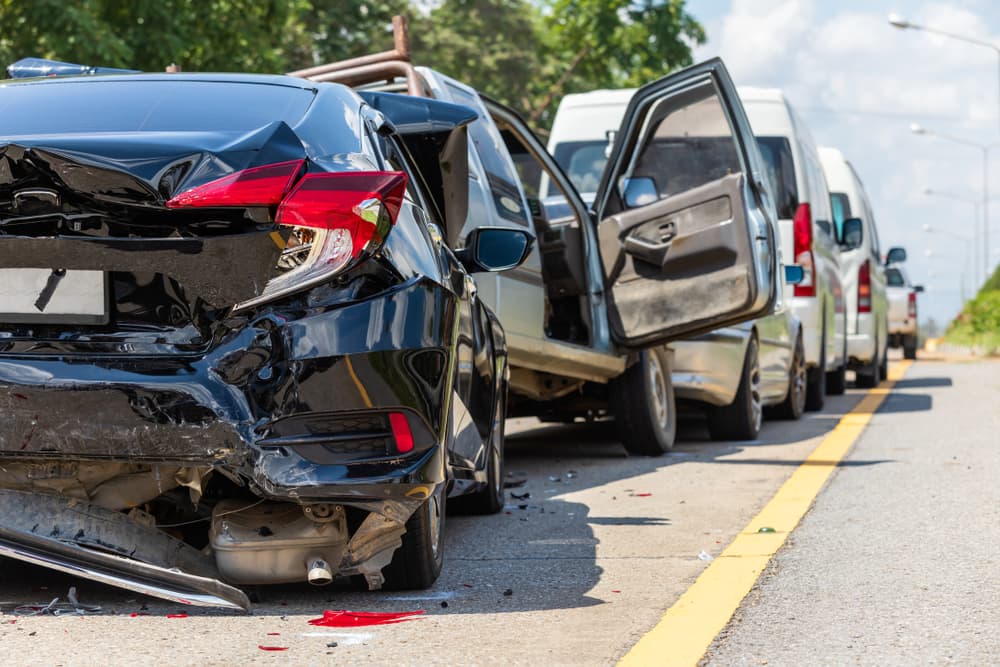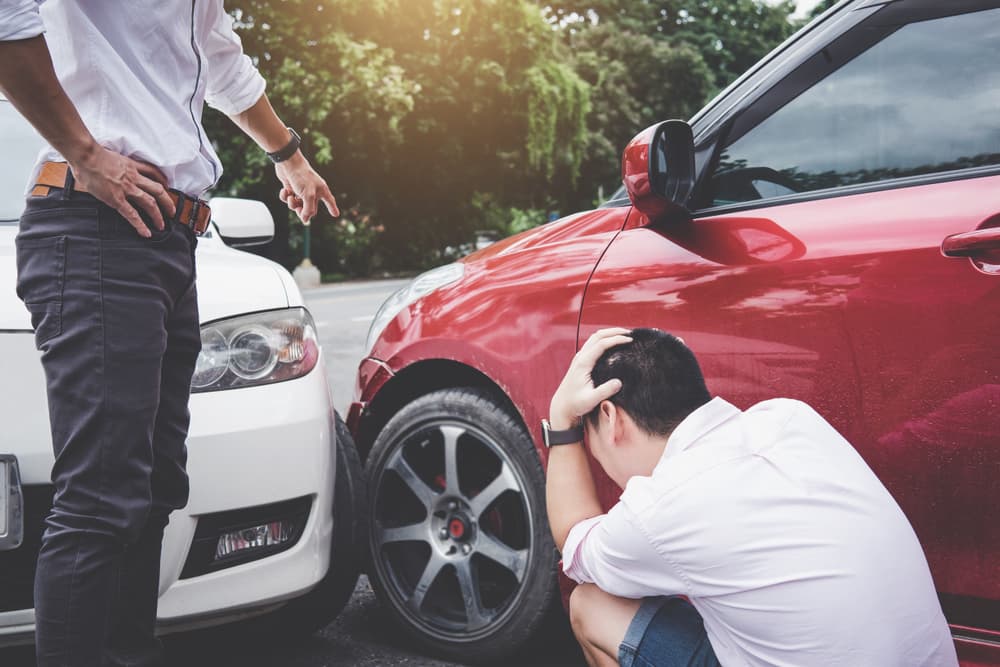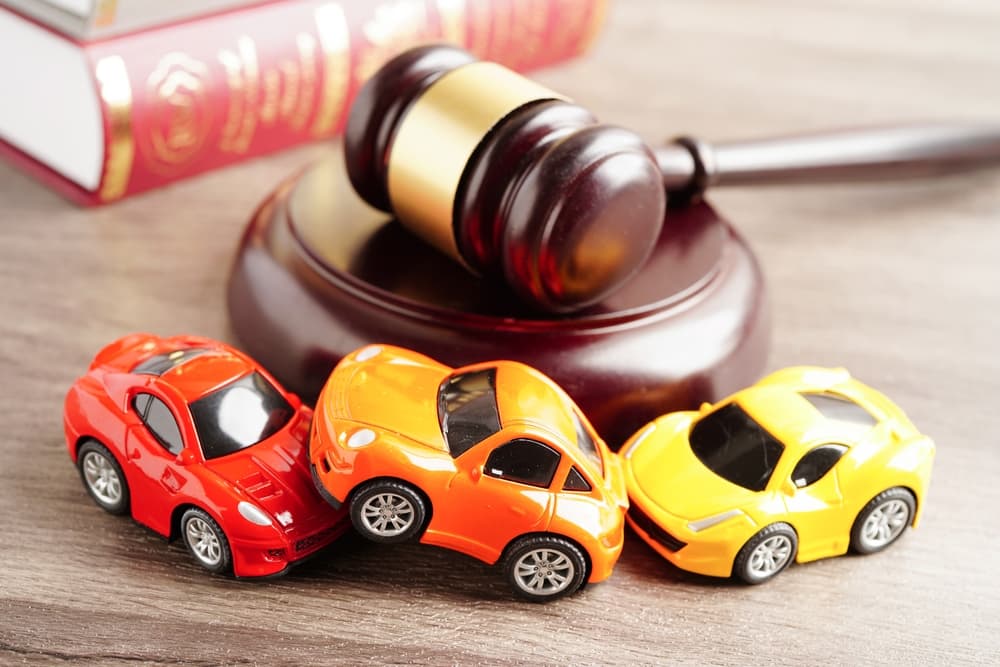Multi-car accidents, including chain-reaction collisions, typically occur when one or more drivers behave negligently. If you find yourself on the receiving end of a multi-vehicle crash, you may recover compensation for your injuries and other losses.
A skilled car accident lawyer can determine your eligibility for filing a claim or lawsuit. They can then begin the process for you by gathering documents, drafting a settlement demand letter, and negotiating with insurance company representatives.
If the insurance company does not offer a fair settlement, your lawyer may litigate your case to a resolution in the court system.
How Other Drivers Cause Multi-Car Accidents

Multi-car accidents, also known as chain-reaction or pile-up accidents, occur when three or more vehicles collide.
These accidents often result from the actions of one or more drivers.
- One primary cause of multi-car accidents is tailgating. When a driver follows another vehicle too closely, they do not have enough time to react if the car in front suddenly brakes. This can lead to a rear-end collision that pushes the leading car into the vehicle ahead, creating a chain reaction. Tailgating is especially dangerous in heavy traffic or at high speeds.
- Distracted driving is another significant factor. Drivers who are texting, talking on the phone, eating, or adjusting the radio are not fully focused on the road. Even a momentary lapse in attention can cause a driver to miss important visual or auditory cues, leading to accidents. For instance, a distracted driver may fail to notice that traffic has stopped ahead, resulting in a multi-car crash.
- Speeding also plays a major role in multi-car accidents. Drivers who exceed the speed limit have less time to react to sudden changes in traffic conditions. High speeds reduce the effectiveness of braking, making it harder to avoid collisions. When a speeding driver crashes, the impact is more likely to involve multiple vehicles due to the force of the collision.
- Weather conditions can also exacerbate the likelihood of multi-car accidents. Rain, snow, fog, or ice can make roads slippery and reduce visibility. Drivers who fail to adjust their speed and follow distance accordingly may lose control of their vehicles or cannot stop in time to avoid a crash. For example, in foggy conditions, a driver may not see a stopped car until too late, causing a pile-up.
- Impaired driving is another critical factor. Drivers who are under the influence of alcohol or drugs have slower reaction times, impaired judgment, and reduced coordination. These impairments increase the risk of accidents – particularly multi-car collisions – as impaired drivers are more likely to make erratic or dangerous maneuvers.
If you suffered injuries in a multi-car crash, an experienced car accident lawyer can promptly investigate your accident circumstances and determine your options for moving forward.
Common Injuries in a Multi-Car Crash
Multi-car crashes, often resulting from the negligence of one or more drivers, can result in injuries that lead to ongoing medical treatment, physical therapy, and rehabilitation.
- One of the most common injuries in multi-car crashes is whiplash. This occurs when the neck is rapidly forced backward and forwards, like the cracking of a whip. The sudden force of a collision can cause this jerking motion, leading to neck pain, stiffness, and headaches. Whiplash can also result in long-term discomfort and chronic pain if not properly treated.
- Head injuries are also prevalent in multi-car crashes. When vehicles crash, occupants may hit their heads against the steering wheel, dashboard, doorframe, headrest, or windows. This can cause concussions or traumatic brain injuries (TBIs). TBI symptoms include headaches, confusion, dizziness, and memory problems. Severe TBIs can have lasting effects on cognitive and physical abilities.
- Broken bones are another common injury. The force of a collision can cause fractures in various parts of the body, including the legs, arms, ribs, and pelvis. Broken bones can lead to significant pain, require lengthy recovery periods, and sometimes necessitate surgery. In severe cases, fractures can lead to a permanent disability.
- Spinal injuries are particularly serious and can occur when the spine is subjected to extreme forces during a crash. These injuries range from herniated discs to spinal cord damage, which can result in partial or complete paralysis. Spinal injuries often require extensive medical treatment and rehabilitation, dramatically affecting a person’s overall quality of life.
- Internal injuries are also a major concern. The force of a multi-car collision can cause damage to internal organs, such as the spleen, liver, or kidneys. These injuries may not immediately manifest but can kill you if not promptly diagnosed and treated. Internal bleeding and organ damage often require emergency surgery and intensive care.
Lastly, never overlook emotional and psychological injuries. The trauma of a multi-car crash can lead to post-traumatic stress disorder (PTSD), anxiety, and depression. These long-lasting psychological effects can require professional mental health support.
If you suffered any of these injuries in a recent multi-vehicle crash, an experienced car accident lawyer can investigate your accident circumstances and gather documentation while you focus on your medical treatment.
Proving Negligence for a Multi-Car Accident

Proving negligence in a multi-car accident involves demonstrating that a driver failed to act with reasonable care, leading to the crash.
You must establish four key elements in a legal setting: duty, breach, causation, and damages.
- The first element is a legal duty of care. This means that every driver must drive safely and follow traffic laws to prevent harm to others. In a multi-car accident, this duty applies to all drivers involved. For example, drivers must obey speed limits, stop at red lights, and avoid distracted driving.
- The second element is a breach of duty. A breach occurs when a driver fails to meet their legal duty of care. This can happen in many ways, such as speeding, running a red light, or texting while driving. To prove a breach, the accident victim must show that the driver acted as a reasonably careful person would not have under similar circumstances. For instance, a driver who tailgated might have breached their duty.
- The third element is causation, which has two components: actual cause and proximate cause. Actual cause means proving that the negligent driver’s actions directly led to the accident. For instance, if a driver ran a red light and hit another car, their actions caused the crash. Proximate cause involves showing that the accident was a foreseeable result of the driver’s actions. For example, texting while driving can foreseeably cause a collision because it distracts the driver.
- The final element is damages. Damages refer to the losses suffered as a direct result of the accident—physical injuries, lost earnings, and pain and suffering. To prove damages, the injured party must provide evidence, such as medical records or direct testimony about how the accident affected their lives.
The involvement of multiple drivers and factors make proving negligence in a multi-car accident difficult.
Evidence like police reports, witness statements, traffic camera footage, and expert testimony can establish the elements of negligence. You must successfully prove these elements to hold the negligent party accountable and obtain fair compensation for the injured party.
How Can a Lawyer Help After a Multi-Car Accident?
After a multi-vehicle accident, a car accident lawyer can protect the injured party’s rights and interests:
- First, a car accident lawyer can thoroughly investigate the accident circumstances. This includes gathering and analyzing evidence such as police reports, witness statements, traffic camera footage, and photographs from the accident scene. They may also work with accident reconstruction experts to determine how the crash happened and who was at fault.
- Next, a lawyer can assist in dealing with insurance companies. Insurance companies often try to minimize payouts, making claims complex – especially with multiple vehicles involved. A lawyer can communicate directly with the insurers, filing all necessary paperwork accurately and on time. They can also negotiate with the insurance adjusters to seek fair compensation for lost income and other expenses.
- Another important role of a car accident lawyer is determining liability. In a multi-car accident, a lawyer will examine all of the available evidence to identify the negligent party or parties. This may involve proving that a driver breached their duty of care by speeding, driving distracted, or committing another traffic violation.
- A car accident lawyer also provides invaluable support by calculating and pursuing damages. They can assess the full extent of the victim’s economic and non-economic damages. Economic damages cover tangible losses like lost income and loss of earning capacity. Non-economic damages compensate for pain and suffering, emotional distress, and loss of life enjoyment. Lawyers pursue all potential damages.
- Additionally, a car accident lawyer can represent the injured party in court if you cannot reach a fair settlement with the insurance companies. They will prepare and file the necessary legal documents, build a strong case, and advocate on the accident victim’s behalf during trial. This legal representation can significantly increase the chances of obtaining a favourable verdict and appropriate compensation.
- Finally, a car accident lawyer offers peace of mind. Having a knowledgeable lawyer handle the legal aspects allows the injured party to focus on their recovery.
Recovering Compensation for Injuries in a Multi-Car Accident

Victims of a multi-car accident may recover compensation.
Compensation covers the financial losses and hardships resulting from the accident, ensuring that victims can recover and move forward.
- Lost income is a critical component of compensation. If the injuries sustained in the accident prevent the victim from working, they can recover the income they would have earned during their recovery period. This also covers situations where the victim has to take a lower-paying job due to their injuries – or if they are unable to return to work at all. In these situations, accident victims may recover compensation for their loss of earning capacity.
- Pain and suffering compensation addresses the physical pain and emotional distress resulting from the car accident. This type of compensation is more subjective and can include the effect of the injuries on the victim’s quality of life, such as chronic pain, anxiety, depression, and loss of life enjoyment. Calculating pain and suffering compensation often involves considering the severity of the injuries and their long-term effects.
- Loss of consortium refers to compensation for the effect the accident has on the victim’s relationship with their spouse or family. This can include loss of companionship, affection, and support. In severe cases where the accident results in the victim’s death, their family may also seek wrongful death damages to cover funeral expenses and the loss of financial support and companionship.
- Finally, punitive damages may punish the negligent driver and deter similar, particularly reckless or malicious behaviour.
Speak with a Skilled Car Accident Lawyer Near You Today
If you suffered injuries in a recent multi-car accident, speak with a knowledgeable personal injury lawyer in Calgary as soon as possible.
Your lawyer can investigate your accident and determine your available avenues for recovering monetary compensation. Your lawyer can then take the necessary steps to maximize the compensation you ultimately recover for your injuries.
